Branzino – Dicentrachus Labrax
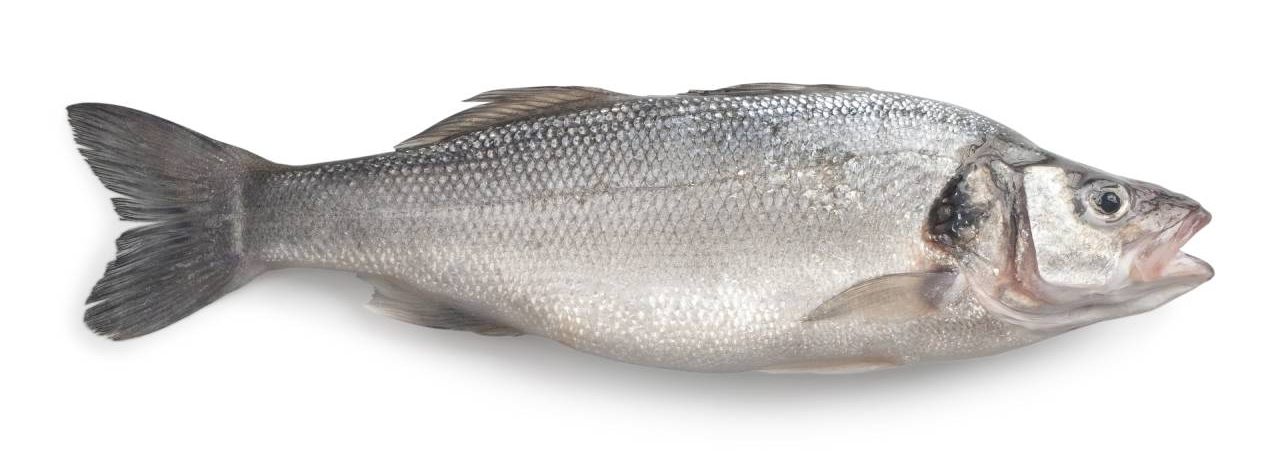
Why Branzino (branzini, plural) from AnT Seafood?
.1
We’re the branzino specialists
.2
Supplying fresh & frozen worldwide
.3
flexible and reliable partner
.4
we control the entire process
.5
we guarantee the best price/quality
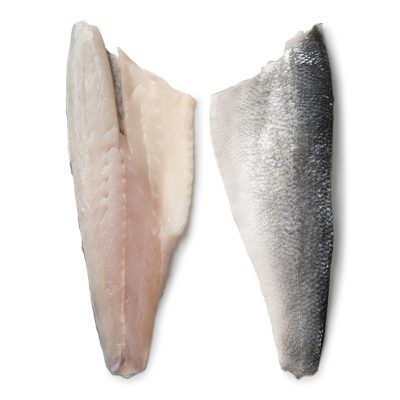
Sizes and grading
Branzino Whole fish and fillets
Roughly speaking, Branzino is available in the following processing and gradings;
Processing: Whole round, Gutted, Gutted and Descaled, Guttend, Descaled and Gilled, Fillets with skin PBI (pin bone in), Fillets with skin PBO (pin bone out), Butterfly fillets with skin
Whole round: 300-400, 400-600, 600-800, 800-1000, 1000-1500, 1500-2000, 2000-2500, 2500-3000, 3000-3500, 3500-4000
Fillets: 60-80, 70-120, 70-140, 80-90, 80-100, 80-120, 100-120, 100-140, 120-160
, 140-180, 180-240, 240+
Certificates: Global Gap (standard), ASC
Shelf life: The shelf life of fresh Branzino depends on a number of factors. Our standard shelflife is max. 14 days after catch, stored by 0 – 2 degrees Celsius.
Other gradings and processing re possible in consultation! Availability may depend on season, weather and market conditions.
We can supply all products in both fresh and frozen form.
Packaging options
All our products can be packed according to your specifications . For example, we can package your fish products in retail boxes or retail bags under private label . You can also choose from a variety of bulk containers for use as packaging for your products.

basic / standard
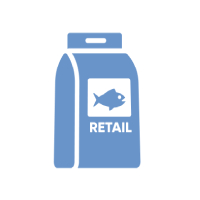
retail

bulk
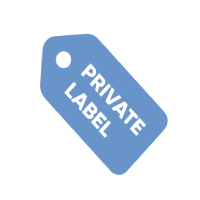
private label
Directly more information about Prices
Nutritional values
Branzino rich in omega 3
Nutritional value per 100g
Energy: 138 kcal / 580 kj
Proteins: 20.47g
Fats: 5.83g
Carbohydrates: 0g
Branzino is a fatty fish common to Japanese and South American cuisine. In addition to selenium and protein, seabass also contains 470 mg of DHA and 180 mg of EPA omega-3 fatty acids per serving (source: The manual)
worldwide
we have various possibilities to deliver our products worldwide
fresh fish
Our Branzino is available as a fresh product
Frozen fish
Our Branzino is available as a frozen product
100% free of Antibiotic
We can offer Branzino without any antibiotic. Ask for the possibilities.
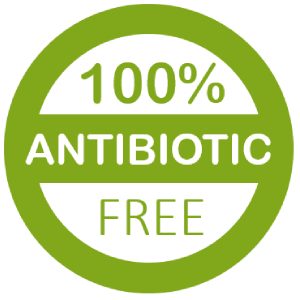
Quality
High-quality fish is what AnT Seafood guearantees to its customers. We only work with the highest certified companies and continuously audit our production partners, which enables total quality control.
The nurseries and production locations are also annually audited by various of our customers. AnT Seafood is aware of corporate responsibility and that is why we prefer sustainably certified fish with ASC, MSC or Global GAP quality mark.
Certificates: ASC, BRC, Global Gap, MSC

Dicentrachus Labrax
Branzino is a popular and delicious species
Ant Seafood is a wholesaler in fresh and frozen Fish
We control the entire process from cultivation to worldwide deliveries.
We make the end product according to the customer’s wishes! We do this with a lot of passion, care and quality assurance.
Sea bass is a common name for a variety of saltwater fish species that belong to the family Moronidae. Depending on the region and the species, sea bass may also be known by a variety of other names. Some of the more common names for sea bass include:
- European sea bass (in Europe)
- Black sea bass (in North America)
- Striped bass (in North America)
- White sea bass (in North America)
- Giant sea bass (in North America)
- Japanese sea bass (in Japan)
- Barramundi (in Australia)
- Lates (in Africa)
- Branzino (branzini, plural)
European seabass is sold under various names including Mediterranean seabass, branzino, and loup de mer. In the UK it is sold as European seabass whereas in US, it’s most frequently sold as branzino (branzini, plural)
These are just a few examples of the many different names that sea bass can go by, and the specific name used can vary depending on the species and the region where it is caught or consumed.
Sea bass is a type of saltwater fish that belongs to the family Moronidae. It is a popular food fish, and is prized for its mild, delicate flavor and firm, white flesh.
There are many different species of sea bass found around the world, including the European sea bass, the striped bass, the white sea bass, and the black sea bass. These species can vary in size, with some reaching lengths of over 3 feet and weights of up to 80 pounds.
Sea bass is a good source of high-quality protein, omega-3 fatty acids, and several essential vitamins and minerals, including vitamin B12, selenium, and potassium. It can be cooked in a variety of ways, including grilling, baking, and pan-searing, and is often served with a variety of sauces and seasonings.
However, some species of sea bass are overfished or caught using unsustainable fishing methods, which can have negative impacts on the environment and the health of the fish population. It is important to choose sustainably sourced sea bass or other seafood options to help protect the ocean and its ecosystems.
The shelf life of fresh sea bass can vary depending on several factors, including the temperature at which it is stored, the age and quality of the fish, and whether it has been gutted and cleaned or is still whole.
As a general rule, fresh sea bass should be stored in the refrigerator at a temperature of 32-39°F (0-4°C) and consumed within 1-2 days of purchase. If the fish has been gutted and cleaned, it may last slightly longer, up to 3-4 days, if properly stored.
To help extend the shelf life of fresh sea bass, you can wrap it in plastic wrap or aluminum foil and place it in an airtight container before storing it in the refrigerator. Avoid leaving the fish out at room temperature for an extended period of time, as this can increase the risk of bacterial growth and spoilage.
It is important to note that the shelf life of sea bass may be reduced if the fish was not handled or stored properly before you purchased it. When selecting fresh sea bass, look for fish that has bright, clear eyes, firm flesh, and a fresh, clean scent. If the fish has a strong or unpleasant odor, appears slimy or discolored, or has any other signs of spoilage, it should not be consumed.
There are several other keywords and terms that are commonly associated with sea bass, including:
- Moronidae (the scientific family name for sea bass)
- Branzino or Branzini (Italian name for European sea bass)
- Loup de mer (French name for European sea bass)
- Aquaculture (the farming of sea bass for food production)
- Sustainable seafood (refers to seafood that is caught or farmed using methods that support the long-term health and productivity of the ocean)
- Overfishing (the practice of catching fish faster than they can reproduce, which can lead to population declines and ecosystem damage)
- Mercury (a potentially harmful environmental contaminant that can be found in some species of sea bass)
- Omega-3 fatty acids (healthy fats found in sea bass that have been linked to several health benefits)
- Fillet (a boneless piece of sea bass that has been cut from the fish’s body)
Whole fish (a sea bass that is sold and prepared with its head, tail, and other parts intact)
The sustainability of sea bass can vary depending on the species and the fishing or farming practices used to produce it.
Some sea bass populations are considered to be overfished or at risk of overfishing, and fishing practices such as bottom trawling can have negative impacts on the marine environment and other species that live in the same areas. Additionally, some sea bass farms may contribute to water pollution or use large amounts of antibiotics or other chemicals, which can have negative impacts on the environment and human health.
However, there are also sustainable methods for catching and farming sea bass that aim to minimize environmental impacts and support the long-term health of fish populations and ecosystems. These include methods such as trap fishing, which allows for the selective capture of mature fish while avoiding other species and minimizing damage to the seafloor, and responsible aquaculture practices that use closed or semi-closed systems, avoid the use of antibiotics and chemicals, and prioritize the health and welfare of the fish.
To ensure that the sea bass you consume is sustainable, look for certifications such as the Marine Stewardship Council (MSC) or Aquaculture Stewardship Council (ASC) labels, which indicate that the fish has been caught or farmed using sustainable methods. Additionally, choose sea bass that is caught or farmed locally and in season, as this can help to reduce the environmental impact of transportation and ensure that the fish is fresher and more flavorful.
Sea bass can be a healthy food choice as it is a good source of high-quality protein, omega-3 fatty acids, and several essential vitamins and minerals, including vitamin B12, selenium, and potassium. These nutrients can provide a range of health benefits, such as supporting cardiovascular health, reducing inflammation, and promoting brain function.
However, it is important to keep in mind that the nutritional content and health benefits of sea bass can vary depending on the specific species and how it is prepared. For example, sea bass that is fried or served with high-calorie sauces can be less healthy than grilled or baked sea bass that is served with fresh vegetables and whole grains.
Additionally, some species of sea bass may contain higher levels of mercury or other environmental contaminants, depending on where and how they were caught. It is important to choose sustainably sourced sea bass and to consume it in moderation, as part of a balanced and varied diet. If you have any concerns or health conditions that may be impacted by consuming sea bass, you should consult with a healthcare professional for individualized advice.
Both “Sea Bass” and “Seabass” are correct spellings and are used interchangeably to refer to this type of fish.
“Sea Bass” is a common way of writing the name in the United States, whereas “Seabass” is more commonly used in the United Kingdom and Australia. However, both spellings are widely recognized and used in both regions.
It is worth noting that “Sea Bass” and “Seabass” may also be used to refer to different species of fish depending on the region or context. For example, in some areas, “Sea Bass” may specifically refer to the European sea bass (Dicentrarchus labrax), while “Seabass” may refer to the Asian sea bass (Lates calcarifer) or the Chilean sea bass (Dissostichus eleginoides).
Yes, the figures for aquaculture production of sea bass are available. According to the Food and Agriculture Organization (FAO), the global aquaculture production of sea bass was 402,041 metric tons in 2019.
The major producing countries of sea bass through aquaculture include Turkey, Greece, Spain, Italy, Egypt, and France, among others.
It is worth noting that wild sea bass is also caught for commercial purposes, but the volume of wild catch is significantly lower than that of aquaculture production. The wild sea bass catch can vary from year to year and is subject to regulations and restrictions in many countries to ensure the sustainability of the fishery.
The feed used to raise sea bass in aquaculture can have an impact on the taste and nutritional quality of the fish. In general, the flavor of sea bass is influenced by various factors, including the diet of the fish, the water quality in which they are raised, and their overall environment.
The feed given to farmed sea bass is typically formulated to provide a balanced diet that meets the nutritional requirements of the fish. The feed may contain a variety of ingredients, including fishmeal, vegetable protein sources, and other additives.
Research has shown that the type of feed given to farmed sea bass can impact the fatty acid profile of the fish, which can in turn affect the flavor and nutritional quality of the fish. For example, a diet high in plant-based protein sources may lead to a lower concentration of omega-3 fatty acids in the fish, which can impact both the taste and the health benefits of the fish.
However, it is also worth noting that other factors, such as the age of the fish, the water quality, and the handling and processing of the fish, can also have a significant impact on the taste and quality of the sea bass. Therefore, while feed is one of the factors that can influence the taste of the fish, it is just one of many factors that can impact the final product.
We can offer you Seabass which is GMO free and Tesco proof. What ASC says about feed….
The amount of time it takes to grow sea bass to 400 grams can vary depending on a number of factors, including the water temperature, feed quality, and other environmental conditions. In general, it takes about 6 to 8 months for sea bass to reach a weight of 400 grams in typical aquaculture settings.
During the first few weeks of life, sea bass are typically raised in hatcheries or nurseries, where they are fed a special diet of live or formulated feeds to promote growth and survival. After the initial growth phase, the fish are transferred to larger tanks or net pens where they are fed a diet that is specifically formulated for their nutritional needs.
As the fish grow, the amount of feed they consume increases, and their growth rate will depend on a number of factors, including water temperature and quality, feed quality and availability, and other factors.
Overall, the growth rate of sea bass can vary depending on the specific farming practices used, as well as other environmental factors. However, in optimal conditions, it is typically possible to grow sea bass to a weight of 400 grams in 6 to 8 months.
Sea bass is a nutritious fish that is low in calories and high in protein. Here are some of the key nutritional values of sea bass per 100 grams of cooked, dry heat:
- Calories: 97 kcal
- Protein: 20.6 grams
- Fat: 1.5 grams
- Omega-3 fatty acids: 0.4 grams
- Cholesterol: 57 mg
- Sodium: 73 mg
- Potassium: 358 mg
- Calcium: 12 mg
- Iron: 0.5 mg
- Vitamin A: 3 IU
- Vitamin C: 0.4 mg
Sea bass is a good source of high-quality protein, which is important for building and repairing tissues in the body. It is also relatively low in fat, making it a good choice for people who are watching their calorie intake. The omega-3 fatty acids found in sea bass are known to have many health benefits, including reducing inflammation and promoting heart health. Additionally, sea bass is a good source of several important minerals, including potassium and iron.
Whole sea bass can be prepared and cooked in a variety of ways, including:
- Grilling: Grilled whole sea bass is a popular dish in Mediterranean cuisine. The fish is often marinated in olive oil and herbs, then grilled until the skin is crispy and the flesh is tender and flaky.
- Roasting: Roasting a whole sea bass can help to lock in the flavors and juices. The fish can be stuffed with herbs, lemon, or other aromatics, then roasted in the oven until it is cooked through.
- Steaming: Steaming a whole sea bass is a healthy and flavorful way to prepare the fish. The fish is often seasoned with ginger, scallions, and soy sauce, then steamed until it is cooked through.
- Frying: Frying a whole sea bass can create a crispy and flavorful crust on the outside while keeping the flesh moist and tender. The fish can be dredged in flour or cornmeal and seasoned with spices, then fried until golden brown.
- Sashimi: Sea bass can be served raw as sashimi. The fish is usually sliced thinly and served with soy sauce, wasabi, and pickled ginger.
In addition to cooking the fish, the head, bones, and other parts of the whole sea bass can also be used to make fish stock, which can be used as a base for soups, stews, and sauces.
When serving a whole sea bass, it is important to be aware of any bones and to handle the fish carefully to avoid breaking or damaging the delicate flesh. The fish can be served with a variety of side dishes, including roasted or steamed vegetables, rice, or potatoes.

